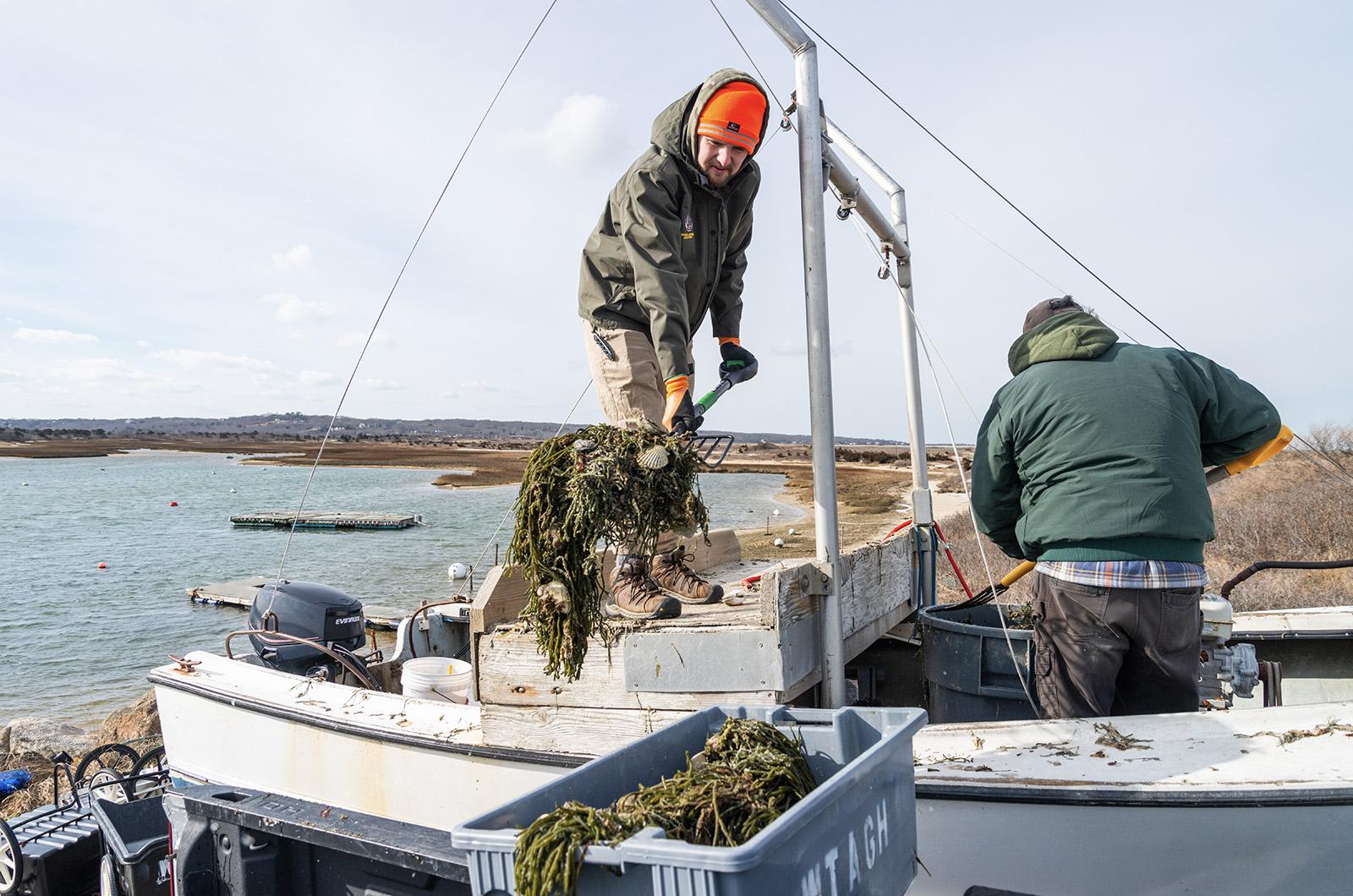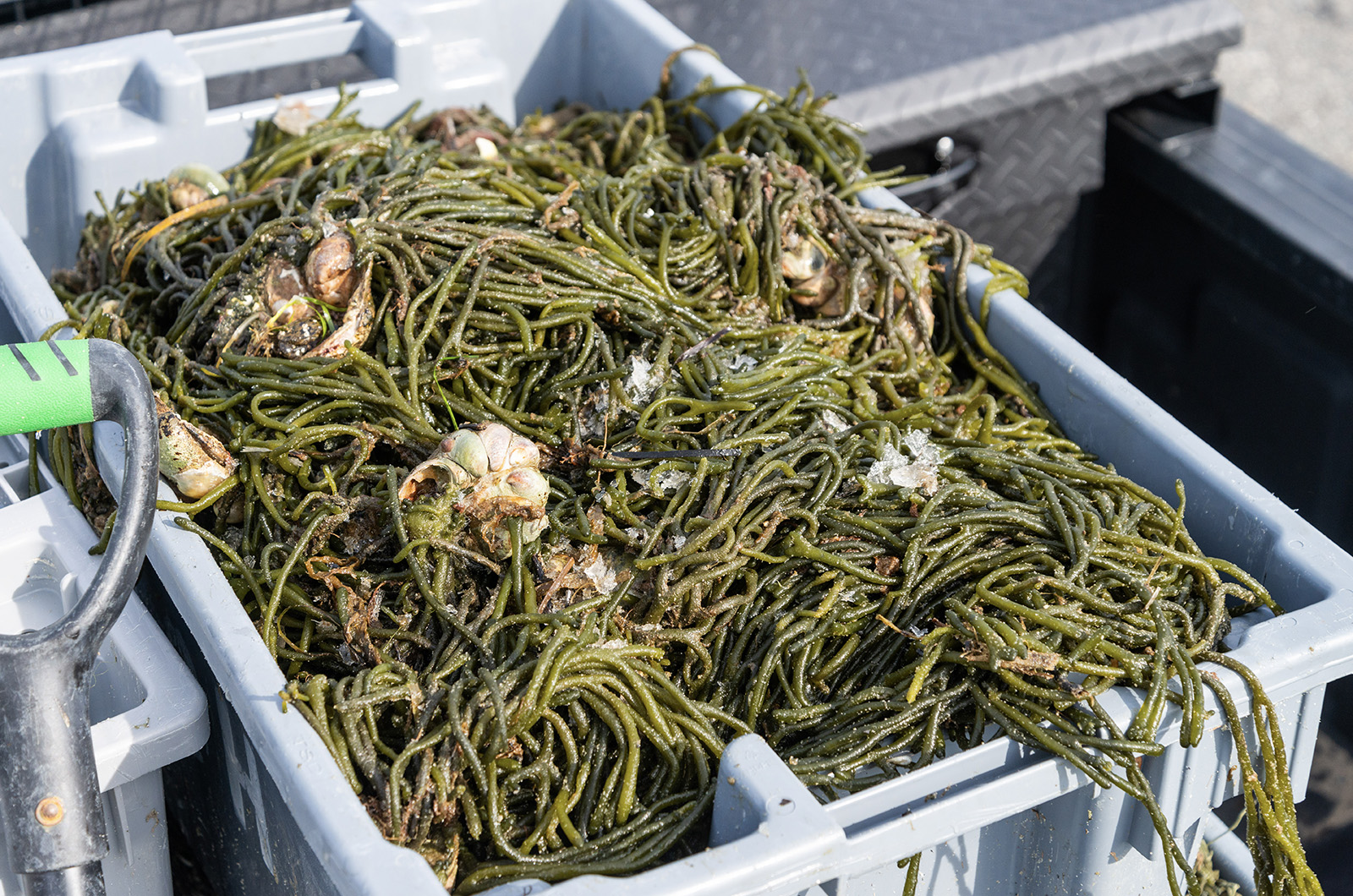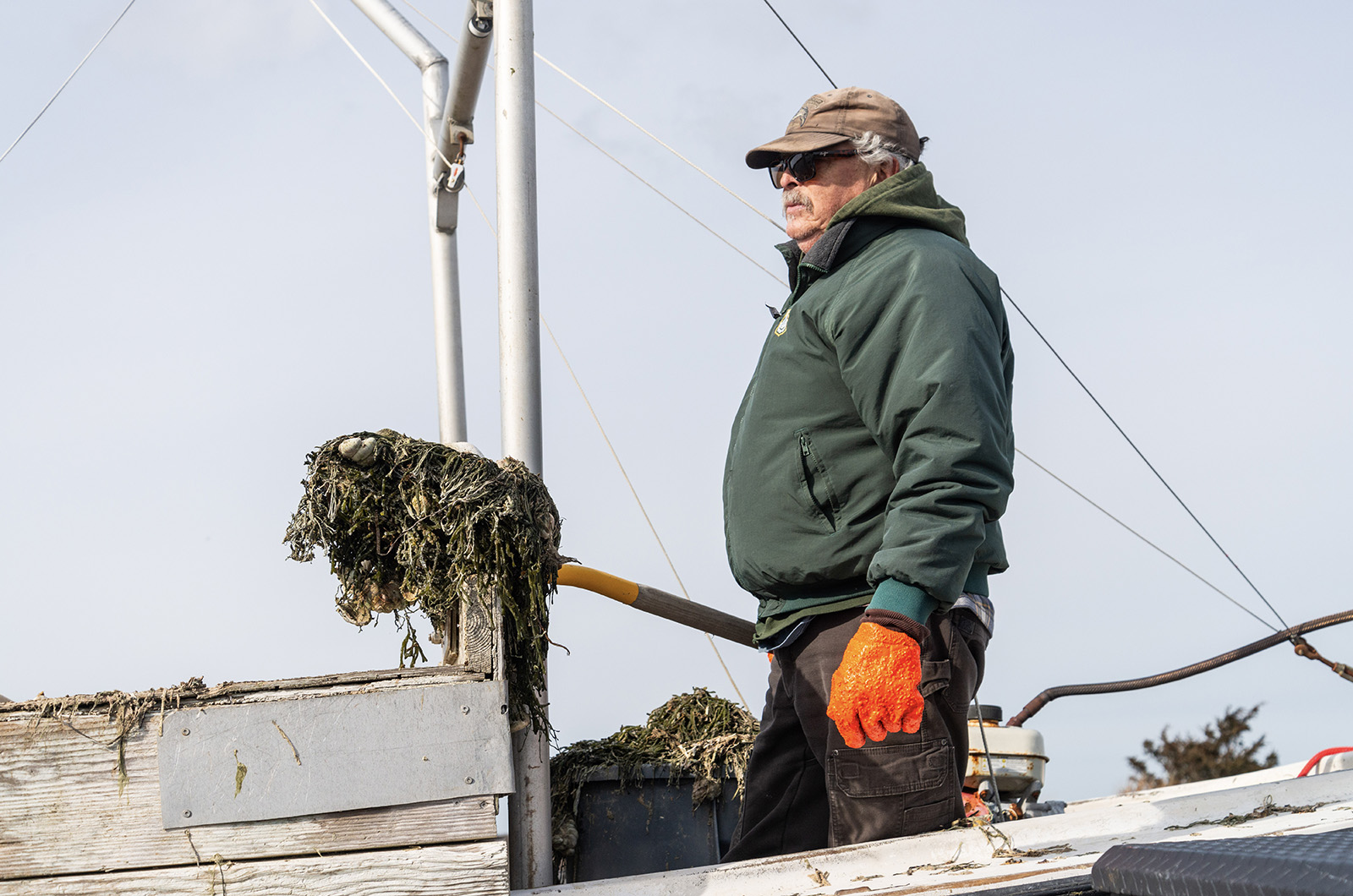There is a bounty out in Aquinnah, a target on the back of a green, spongy, aquatic invader of Menemsha pond now threatening Island shellfish.
Its scientific name is Codium fragile, but for many beachcombers across the Island the invasive macroalgae goes by a more ominous title: dead man’s fingers.
“It’s been a presence here, unfortunately, for far too long now,” said Andrew Jacobs, laboratory manager for the Wampanoag Tribe of Gay Head (Aquinnah), of the species. “We’d love to be able to point to a cause . . . but those specific reasons aren’t well understood.”
The organism is a seaweed species native to the Pacific Ocean that can wreak havoc on a pond’s ecosystem, damaging sensitive eelgrass habitat and creating difficulties for local fishermen. It is pervasive all over the Vineyard, but recently the town of Aquinnah and the Wampanoag tribe has tried a new tactic to help mitigate the spread of the species: paying local fishermen a bounty to remove the seaweed from local waters.
“The last two years, it’s been pretty bad,” said Aquinnah shellfish constable and scalloper Brian (Chip) Vanderhoop. “There was so much over the bottom of
the pond. I was afraid that it was going to choke out, to smother the eelgrass.”
Though the species first made it to Atlantic waters the 1960s, Mr. Vanderhoop said he began noticing the seaweed’s spread to Vineyard waters in the 1980s. In recent years, he said, the codium invasion has become much more severe.
“In the beginning of the [scallop] season, it’s like mowing the lawn,” he said, of his experience dealing with the species as a fisherman.
Most commercial scallopers on-Island harvest using a fishing dredge dragging along behind their boat. With the proliferation of codium in scalloping grounds, fishermen have to spend more time hauling up dredges filled with heavy seaweed, making each trip less productive.
“Codium was regularly filling up their scallop drags, causing them to spend far more time than they were used to pursue both the commercial and recreational limits,” Mr. Jacobs said.
But the negative environmental effects of codium don’t end there, said Aquinnah tribal resources field technician Andrew Karlinsky.
“Codium requires a rocky surface to attach to, which usually just means shells,” he said, with the seaweed often attaching itself to live scallops and oysters. When a storm or a strong current hits the pond, Mr. Karlinsky said, those connections can cause problems.
“When it’s attached to a shell it can rip it up, loosen the soil and also can carry scallop seed and scallops to the shoreline, which can just end up killing them,” he said. “And that soil loosening, that can in turn affect the eelgrass population around it.”
Mr. Jacobs said the proliferation of codium along the shoreline had become so common on-Island that many are under the impression that it is a native species.
The bounty began last year when Mr. Vanderhoop said he approached the town about paying fishermen to bring in the seaweed. After a successful first run at the program, he approached the tribe about participating this year.
The mission, said Mr. Jacobs, fit well with a recent grant to mitigate invasive species the tribe received from the federal Bureau of Indian Affairs.
“It’s been really successful so far,” Mr. Karlinsky said, with fishermen having turned in around 206 fish totes filled with the seaweed so far, coming in at over 20,000 pounds. The tribe and the town pay $20 per tote.
“That’s a fraction of what’s out there according to these guys,” he said.
The program has also become an economic support engine for fishermen dealing with the diminished Aquinnah scallop fishery, Mr. Vanderhoop said.
“I think that the codium incentive is keeping people going to make a day’s pay . . . while getting some scallops for yourself to eat,” he said.
For Mr. Jacobs, the program could also prove a useful way to gauge the scale of the codium invasion.
“We’re hoping maybe after this first year, it’s going to give us some baseline information,” he said.
The model could be used in to protect other Island ponds, he added.
“This is data we’re happy to provide to other communities, hopefully as a template, if this becomes as successful as we want it to be,” he said.










Comments (3)
Comments
Comment policy »